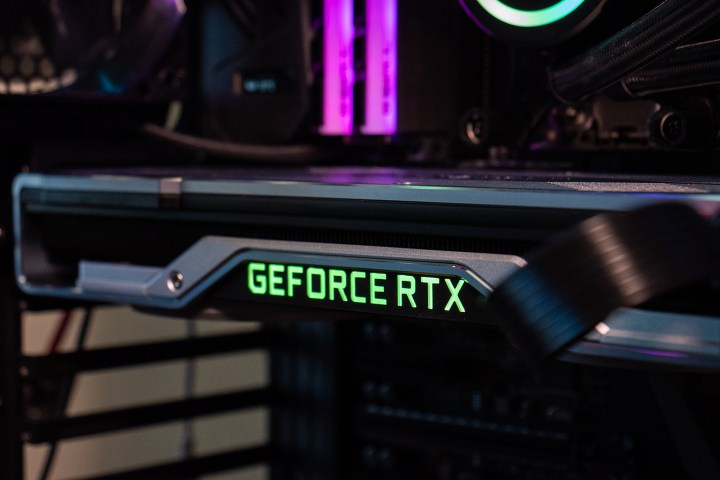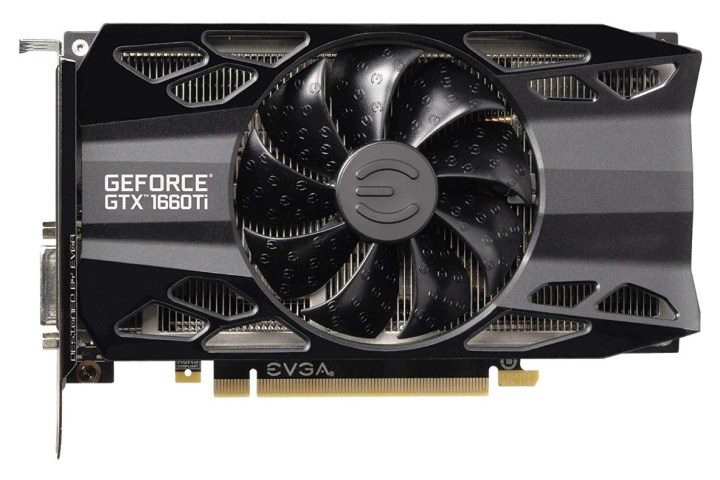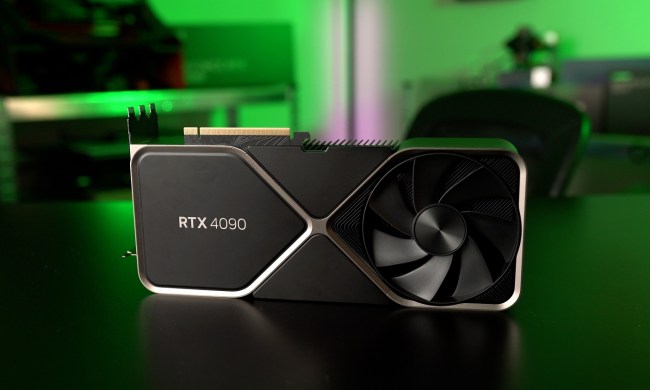Six months after unveiling its high-end RTX 20 Series graphics cards, including the RTX 2080 and 2080 Ti, Nvidia launched new RTX 16 Series cards priced competitively enough to be called midrange. But what are the differences between these two families? Why are their naming conventions different? Is the price gap between them worth bridging?
To find out, we pitted the Nvidia GTX 1660 Ti versus the RTX 2060 in a battle of the midrange powerhouses.
Performance
The GTX 1660 Ti is an intriguing addition to Nvidia’s graphics card lineup because it’s built on the same Turing architecture as the RTX 2060. In many ways, it has much more in common with the last-generation GTX 1060 that it (sort of) takes its name from. Not only does it sport the GTX moniker, but it lacks the RT and Tensor cores for ray tracing and deep learning super sampling, which are hallmarks of the current RTX 20 Series generation.
Let’s take a look at the hardware differences:
| RTX 2060 | GTX 1660 Ti | GTX 1060 | |
| GPU | TU106 | TU116 | GP106 |
| Manufacturing process | 12nm | 12nm | 16nm |
| RT Cores | 30 | 0 | 0 |
| Tensor Cores | 240 | 0 | 0 |
| CUDA Cores | 1,920 | 1,536 | 1,280 |
| Core Clock | 1,365Mhz | 1,500MHz | 1,410MHz |
| Boost Clock | 1,680MHz | 1,770MHz | 1,708MHz |
| Memory | 6GB GDDR6 | 6GB GDDR6 | 6GB GDDR5 |
| Memory speed | 12Gbps | 12Gbps | 8Gbps |
| Memory bus with | 192-bit | 192-bit | 192-bit |
| Memory bandwidth | 336GBps | 288GBps | 192GBps |
| TDP | 160w | 120w | 120w |
| Price | $350 | $280 | $200 |
The GTX 1660 Ti does share a few specifications with the RTX 2060. Its memory is the same 6GB of 12Gbps GDDR6 and it too is built on a 12nm process, representing a 25% die shrink over the 16nm GTX 1060. It also has a bumped clock speed (even higher than the RTX 2060) and features 1,536 CUDA cores. That’s a 20% increase over the GTX 1060 and a 20% drop-off from the RTX 2060.
But how does this equate to real-world performance? The 1660 Ti fits quite comfortably into Nvidia’s lineup as you might expect considering its price point. It performs favorably compared to last-generation graphics cards, equating to roughly a GTX 1070 in terms of raw performance, though the last-generation card does pull slightly ahead in some games. It’s also able to beat out AMD’s RX 590 in most tests, which appears to be the main target of Nvidia’s pricing.
Considering the RTX 2060 tends to compete more favorably with higher-end cards like the GTX 1070 Ti and the AMD Vega 56, it should be no surprise that it’s noticeably more powerful than the GTX 1660 Ti. It differs from game to game, but in general, there is a 10% and 15% gap in performance.
While that is significant enough to make the RTX 2060 a better gaming card — especially if you’re looking to play at 1440p — for those at 1080p, the savings made by opting for a GTX 1660 Ti may be worth it, especially if you aren’t interested in some of the visual features offered by RTX GPUs.
Ray tracing and DLSS

Outside of raw power, the two main selling points for Nvidia’s RTX 20 Series graphics cards are ray tracing and deep learning super sampling (DLSS). Much like in our comparison of the AMD Radeon VII and Nvidia’s RTX 2080, there is a stark difference between the two cards we’re comparing here: One has hardware supporting these features and the other does not.
Early rumors suggested that the GTX 1660 Ti may have Tensor cores, but that’s clearly not the case. While it lacks dedicated hardware, it’s still capable of basic ray tracing effects and a low ray count, but the quality is nowhere near the level seen with Nvidia’s RTX 20 Series family. This ability was enabled through the WHQL 425.31 driver released in April 2019, which brought DirectX Raytracing (DXR) support to the GTX 10 and 16 Series GPUs, but not DLSS.
Overall, the RTX 2060 definitively offers more in terms of an expanded feature set. DLSS, in particular, holds the potential to increase the visual quality of a scene and its performance. Ray tracing is arguably wasted on a card at the level of the RTX 2060, but it is at least possible and some games may leverage its limited RT core count to decent effect in the future.
At this time, there are few games that support either or both features. Those that do, don’t take great advantage of the technology or deliver an experience that is arguably poorer for their support.
Compatibility and price

Neither the RTX 2060 or the GTX 1660 Ti are monstrous graphics cards that will stress your power supply or the interior design of your PC. The 1660 Ti is a much smaller card, however, making it a better pick for most compact systems built on the mATX or Mini-ITX form-factor. You wouldn’t need anything more than a 450- or 500-watt PSU in your system for either of these cards. Even 400 watts may be sufficient for the 1660 Ti.
Most modern motherboards should have no problem running either of these cards, and you won’t run into any bottlenecks with PCI Express 3.0 x16 or x8, nor PCI Express 2.0 x16.
The RTX 2060 originally debuted with a price of $350, but Nvidia dropped the price to $300 in January. You’ll find third-party options selling for around the newer price, though some models can reach up to over $500 in price. Some even offer a free game.
The GTX 1660 Ti has a suggested price of $280 — a mere $20 less than the RTX 2060. Nvidia currently doesn’t offer a “Founders’s Edition” model in stock. Instead, you’ll find plenty of third-party cards ranging in price from $280 to over $400 — even more in some listings.
RTX now holds the bang for buck crown

Nvidia made a big gamble with its RTX 20 Series cards. They only offer modest performance improvements over 10-series Pascal cards, but Nvidia’s doubling down on visual features and enhanced AI function was an attempt to justify the launch price hike. That’s a better value proposition today, but there still aren’t that many games with ray tracing or DLSS support.
We previously billed the GTX 1660 Ti as the best bang for your buck. Sure, this newer, leaner, and weaker GPU is by no means a record-breaker in its class. It’s essentially a GTX 1070 with a lower power draw and a smaller form factor, at a slightly reduced price point. That’s not exactly a major sell from Nvidia more than two years after the launch of the Pascal generation.
But now that Nvidia lowered the suggested price of its RTX 2060 to $300 — just $20 more than the GTX 1660 Ti — we just can’t deny that it offers more bang for your buck. Especially when it adds ray tracing and DLSS capabilities, albeit only in an entry-level fashion.
Still, for those looking to upgrade from a card that’s a few generations old, the GTX 1660 Ti makes for a great 1080p and 1440p gaming card without many of the — at this point — rather unnecessary bells and whistles championed by the overpriced RTX generation. It is also a much more favorable competitor for AMD’s RX 590.
Ultimately, if you don’t care about ray tracing or DLSS, then the GTX 1660 Ti is a decent upgrade. If you’re eager for the lower-end of ray tracing and DLSS in your favorite PC games, grab the RTX 2060 instead.




